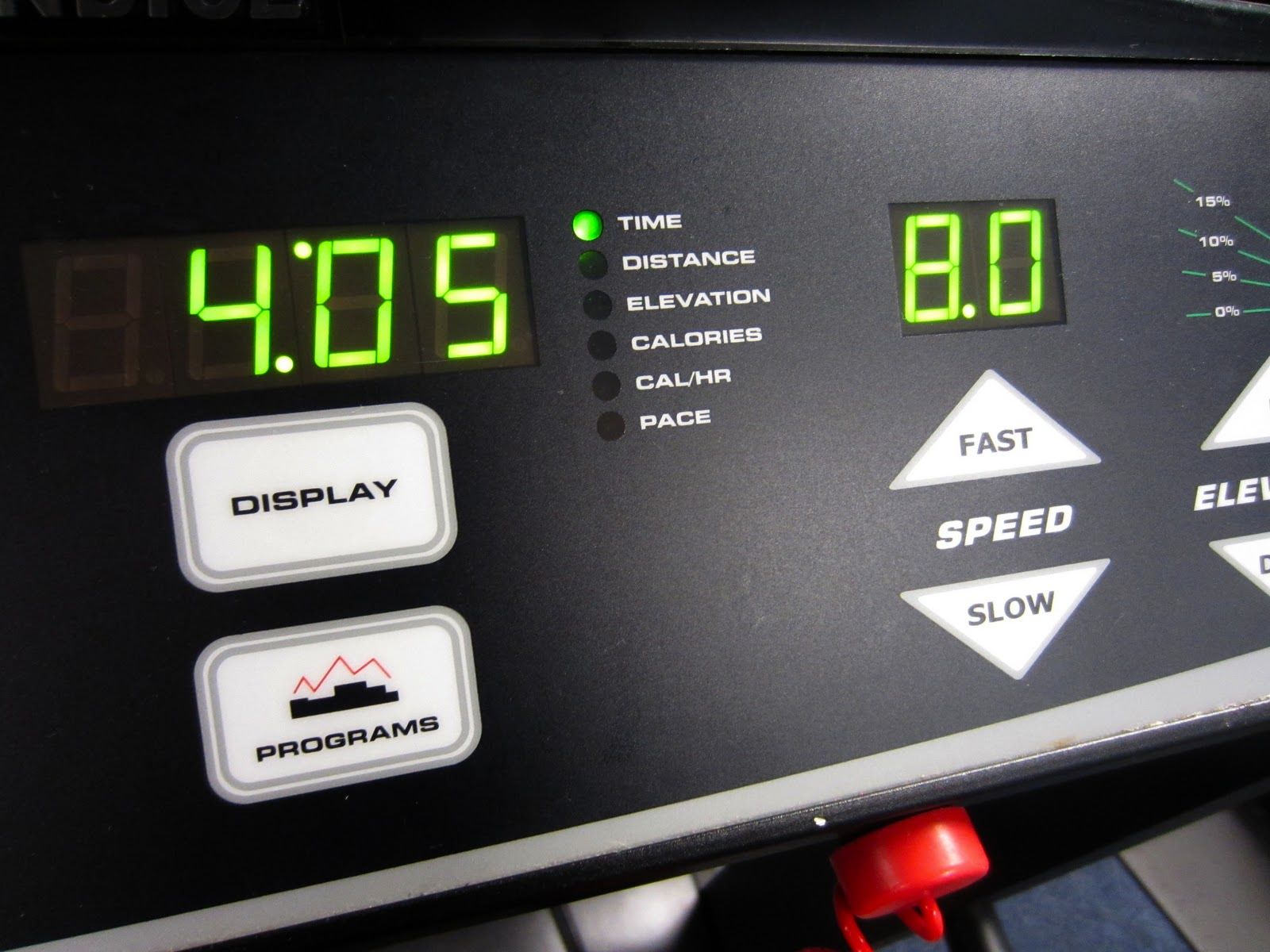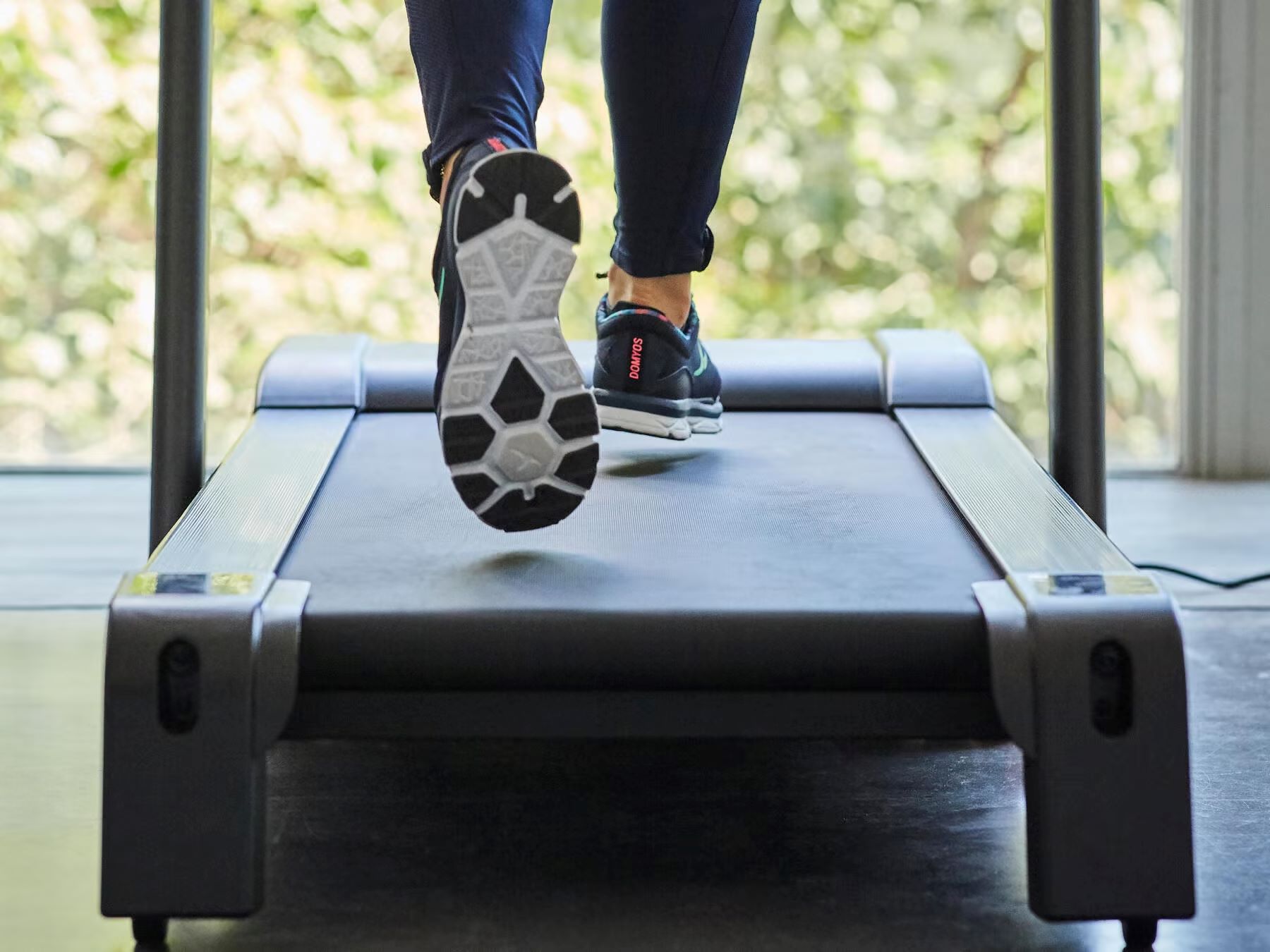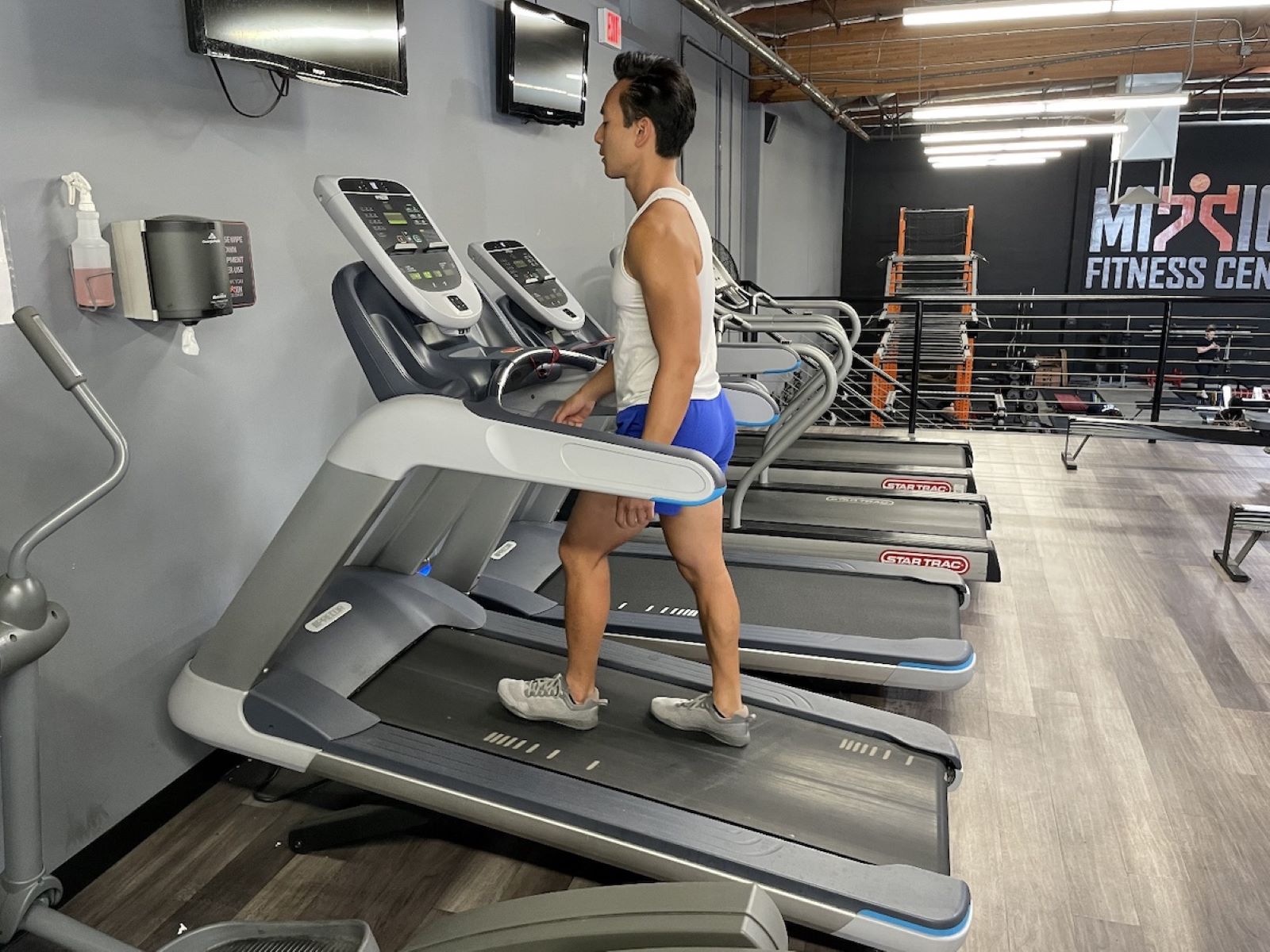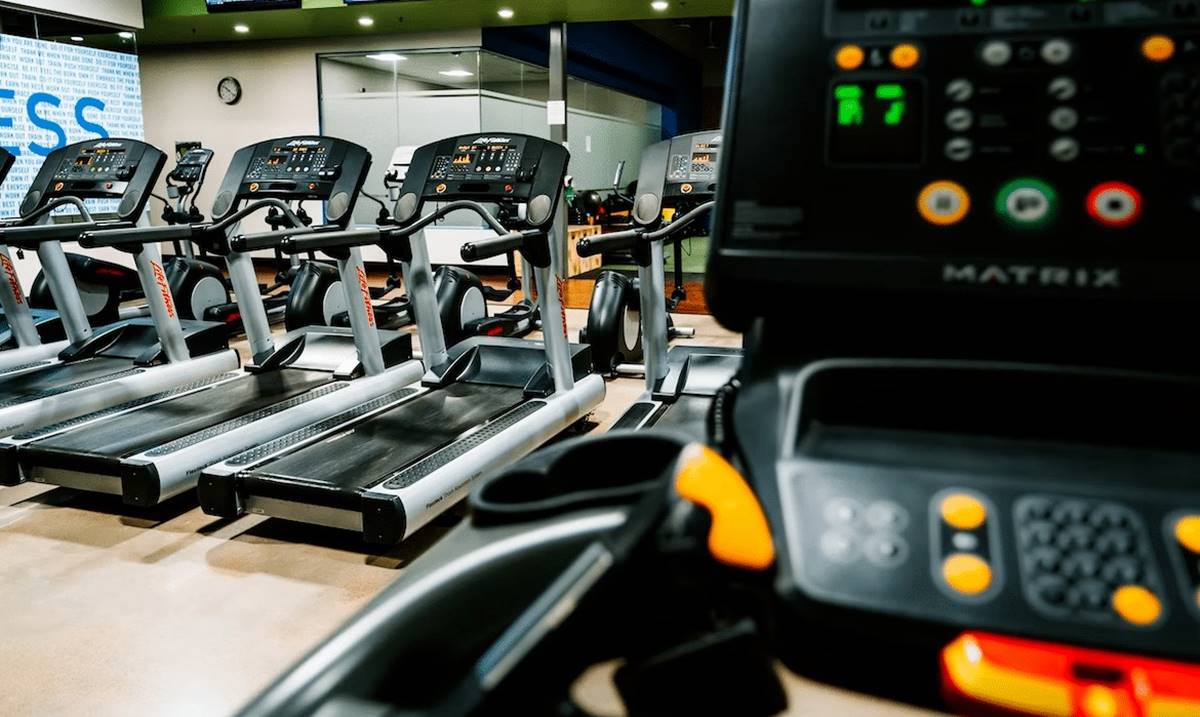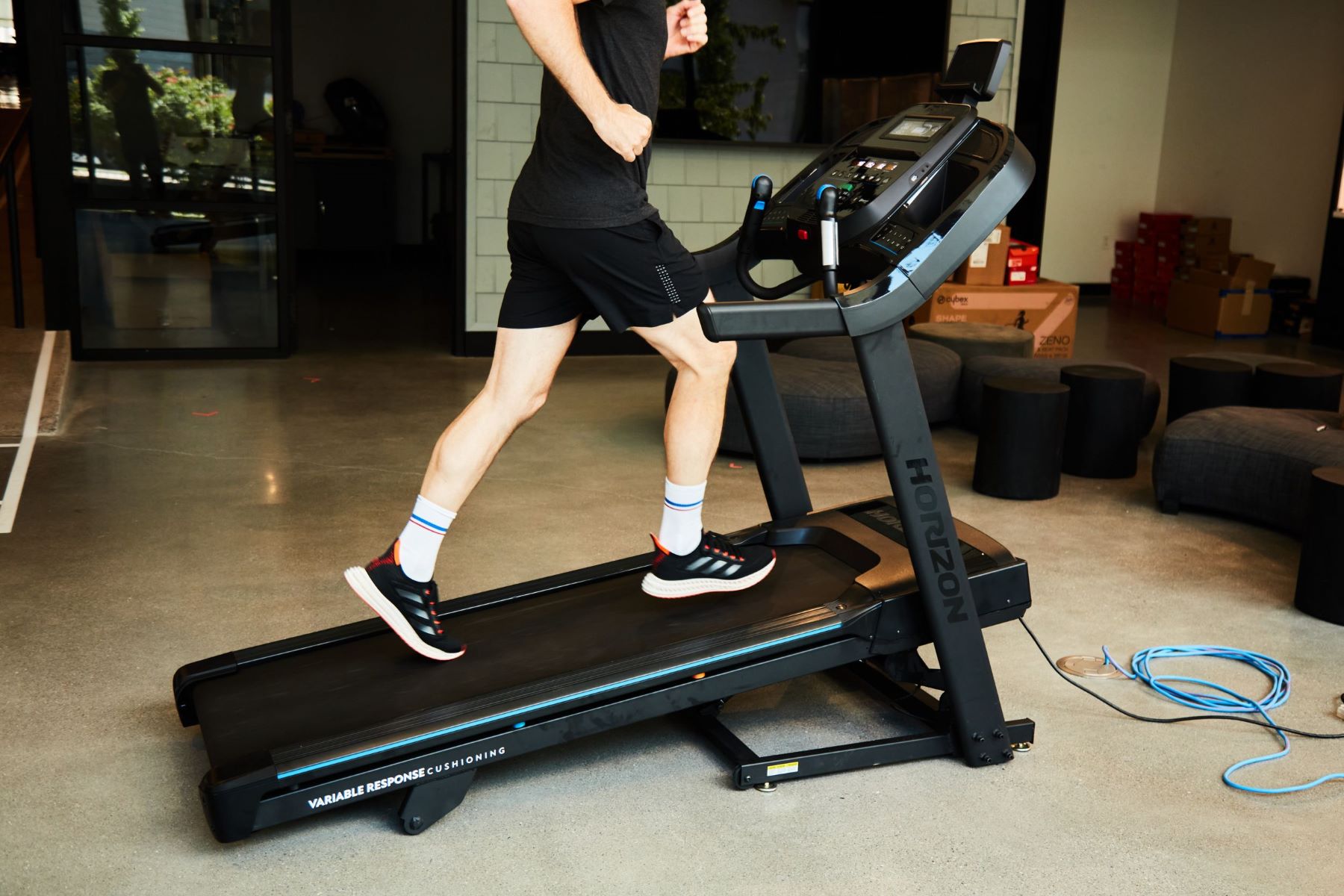

Featured
What Does Incline On A Treadmill Mean
Modified: August 21, 2023
Discover what incline on a treadmill means and how it can enhance your workout. Uncover the benefits of incorporating incline training with featured treadmills.
Introduction
When it comes to treadmill workouts, most people focus on speed and distance. However, there is another important factor that can greatly enhance the effectiveness of your workout – incline. Incline on a treadmill refers to the upward slope or angle that can be adjusted to simulate walking or running uphill. It may seem like a small detail, but incorporating incline into your treadmill workouts can have a significant impact on your fitness journey.
The concept of incline mimics the natural terrain and challenges your muscles in different ways. By increasing the angle, you engage different muscle groups, intensify your cardiorespiratory system, and burn more calories. Moreover, incorporating incline into your workouts can provide a refreshing change from flat runs, keeping your routine interesting and motivating.
This article will explore the importance of incline on a treadmill, understand the different incline levels, discuss the benefits of incorporating incline into your workouts, explain how to adjust and use the incline on a treadmill, and provide precautions and safety measures when performing incline training.
So, if you’re ready to take your treadmill workouts to the next level and maximize your fitness results, let’s dive into the world of incline on a treadmill!
Importance of Incline on a Treadmill
Incorporating incline on a treadmill adds a whole new dimension to your workout routine. Here’s why incline is important when it comes to treadmill workouts:
- Increased calorie burn: One of the key benefits of using incline on a treadmill is the significant increase in calorie burn. Walking or running uphill requires more effort from your muscles, resulting in a higher workload and increased energy expenditure. In fact, studies have shown that exercising at a 1% incline can burn up to 5% more calories compared to walking or running on a flat surface.
- Muscle engagement: Incline workouts on a treadmill engage a wider range of muscles compared to flat surface workouts. When you walk or run uphill, your glutes, hamstrings, quadriceps, and calves have to work harder to propel you forward. This helps to strengthen and tone these muscle groups, giving you a more balanced and sculpted physique.
- Increased cardiovascular challenge: Walking or running uphill elevates your heart rate and puts more demand on your cardiovascular system. This not only improves your cardiovascular endurance but also helps to strengthen your heart and lungs over time. By incorporating incline into your treadmill workouts, you can effectively boost your cardiovascular fitness levels.
- Variety and interest: Adding incline to your treadmill sessions helps to break the monotony of flat runs. It provides variety and spice to your workouts, making them more interesting and enjoyable. The change in terrain simulates real-world conditions and keeps your mind and body engaged, preventing boredom and helping you stay motivated.
- Treadmill simulation: If you’re training for a race or event that involves hilly terrain, incorporating incline on a treadmill can be highly beneficial. By adjusting the incline setting, you can recreate the uphill and downhill sections of the racecourse, allowing you to train specifically for the challenges you’ll face during the actual event.
So, whether you’re looking to burn more calories, engage different muscles, improve cardiovascular fitness, add variety to your workouts, or simulate outdoor terrain, incline on a treadmill is a valuable tool that can elevate your fitness journey to new heights.
Understanding Incline Levels
When it comes to incline on a treadmill, it’s important to understand the different levels and what they represent. Most treadmills allow you to adjust the incline in percentage increments or as a degree of elevation. Here are the common incline levels you’ll encounter:
- Flat (0% incline): This is the default setting where the treadmill is completely level, simulating a flat surface. It’s a good starting point for warm-ups, cool-downs, or low-intensity workouts.
- Low incline (1-3%): This level replicates a slight uphill grade. It’s great for incorporating a modest challenge into your workout without placing too much strain on your muscles and cardiovascular system. It’s also an excellent choice for fat burning, as it increases calorie expenditure compared to a flat surface.
- Medium incline (4-6%): This level increases the difficulty and intensity of your workout. It engages your muscles more, particularly your lower body, and further elevates your heart rate. Medium incline is ideal for building endurance and strengthening your legs.
- High incline (7-9%): At this level, you’ll experience a significant challenge. The higher incline intensifies your workout, increasing the workload on your muscles and cardiovascular system. This setting is perfect for interval training, hill repeats, and building strength and power in your lower body.
- Maximum incline (10-15% or more): This level represents the steepest incline available on most treadmills. It simulates a steep hill climb and provides the most demanding workout. It requires substantial effort from your muscles and significantly elevates your heart rate. Running or walking at the maximum incline level is excellent for building lower body strength, enhancing endurance, and improving overall cardiovascular fitness.
It’s important to start with a lower incline level if you’re a beginner or haven’t incorporated incline into your workouts before. Gradually increase the incline as your fitness level improves and your muscles adapt to the challenges. Listen to your body and adjust the incline to a level that challenges you without causing excessive strain or discomfort.
Understanding the different incline levels allows you to tailor your workouts to your specific goals and fitness level. By strategically using incline on a treadmill, you can create customized workouts that provide the right amount of challenge and help you achieve your desired results.
Benefits of Incorporating Incline in Your Treadmill Workout
Incorporating incline in your treadmill workouts offers a wide range of benefits that can enhance your overall fitness level and help you achieve your goals. Here are some key benefits of using incline:
- Increased calorie burn: Walking or running uphill on a treadmill requires more effort and energy expenditure, resulting in a higher calorie burn compared to flat surface workouts. By incorporating incline into your treadmill sessions, you can maximize your calorie burn and effectively support weight loss or weight maintenance goals.
- Improved cardiovascular fitness: The uphill challenge provided by incline workouts on a treadmill pushes your cardiovascular system to work harder. As a result, your heart and lungs become stronger and more efficient over time, leading to improved cardiovascular fitness and endurance.
- Strengthened lower body muscles: Walking or running uphill engages various muscle groups in your lower body, including your glutes, quadriceps, hamstrings, and calves. By incorporating incline, you can specifically target these muscles, helping to strengthen and tone them over time. This can contribute to improved overall lower body strength and stability.
- Enhanced bone health: Incline workouts on a treadmill can also have a positive impact on your bone health. The additional force applied to your bones during uphill exercises helps stimulate bone remodeling, ultimately leading to stronger bones and a reduced risk of bone-related conditions, such as osteoporosis.
- Varied workout challenges: Including incline in your treadmill workouts adds variety and challenges to your routine. It breaks the monotony of flat runs and provides a more dynamic and engaging workout experience. The changing terrain and increased intensity keep you mentally stimulated and motivated to stay consistent with your fitness regimen.
- Simulated outdoor conditions: If you’re training for outdoor activities or events that involve uphill sections, incorporating incline on a treadmill can be highly beneficial. It allows you to simulate the specific challenges you’ll face during your outdoor endeavors, helping you build the necessary strength, endurance, and mental resilience.
Incorporating incline in your treadmill workouts not only provides physical benefits but also adds excitement and freshness to your routine. By challenging yourself with different incline levels, you can discover new levels of fitness and achieve your fitness goals in a more efficient and enjoyable way.
How to Adjust and Use the Incline on a Treadmill
Adjusting and using the incline on a treadmill is a straightforward process that allows you to customize your workout intensity. Here’s a step-by-step guide on how to adjust and use the incline:
- Select your workout program: Choose a pre-programmed workout or manual mode on your treadmill. Pre-programmed workouts often include incline variations, which can make it easier to adjust the incline automatically throughout your session.
- Locate the incline controls: Look for the incline buttons or controls on the treadmill console. They are usually labeled with arrows indicating an increase or decrease in incline. Some treadmills have quick incline buttons, allowing you to easily jump to specific incline levels.
- Start with a warm-up: Begin your treadmill workout with a few minutes of walking or jogging on a flat surface to warm up your muscles and prepare your body for the upcoming incline challenge.
- Gradually increase the incline: Once you’re warmed up, start by gradually increasing the incline. If you’re a beginner, start with a low incline level, such as 1-2%. As you become more comfortable and your fitness level improves, gradually increase the incline to challenge yourself further.
- Monitor your form and pace: Pay attention to your posture and maintain a steady pace as you walk or run on the incline. Engage your core, relax your shoulders, and let your arms swing naturally. Avoid leaning forward or holding onto the handrails for support, as this can diminish the effectiveness of the incline workout.
- Experiment with different incline levels: Don’t be afraid to vary the incline throughout your workout. You can incorporate intervals of high and low incline, simulating hill sprints or hill climbs. This adds variety and challenges to your session, allowing you to target different muscles and keep your workout interesting.
- Cool down and stretch: Once you’ve completed your desired incline workout, gradually decrease the incline back to a flat surface and slow down your pace. Finish your session with a few minutes of walking on a flat surface to cool down, followed by proper stretching to promote muscle recovery and flexibility.
Remember to listen to your body and adjust the incline to a level that suits your fitness level and goals. It’s important to start gradually and progress at a pace that feels comfortable yet challenging. With consistent practice, you’ll get more comfortable with using the incline on a treadmill and maximize the benefits of your workouts.
Precautions and Safety Measures with Incline Training
While incline training on a treadmill offers numerous benefits, it’s important to take certain precautions and follow safety measures to ensure a safe and injury-free workout experience. Here are some precautions and safety measures to keep in mind when using incline on a treadmill:
- Start with a proper warm-up: Before engaging in incline training, always start with a thorough warm-up that includes dynamic stretches and a few minutes of walking or jogging on a flat surface. This helps to prepare your muscles and joints for the increased intensity of the incline workout.
- Use appropriate footwear: Wearing proper athletic shoes with good support and cushioning is essential for any treadmill workout, especially when incline is involved. Ensure that your shoes fit well, provide stability, and have a good grip on the treadmill surface to prevent slips or falls.
- Maintain proper form: When walking or running on an incline, it’s crucial to maintain proper form to prevent strain or injury. Keep your posture aligned, engage your core muscles, relax your shoulders, and avoid leaning too far back or forward. This helps distribute the workload evenly and reduces the risk of muscle imbalances or overuse injuries.
- Start with a lower incline level: If you’re new to incline training, start with a lower incline level and gradually increase the intensity over time. This allows your muscles to adapt and reduces the risk of excessive strain or fatigue. It’s important to listen to your body and avoid pushing yourself too hard, especially in the beginning.
- Avoid holding onto the handrails: While it may be tempting to hold onto the handrails for balance or support, it’s best to avoid doing so during incline training. Holding onto the handrails can alter your natural gait and reduce the effectiveness of the workout. Instead, maintain proper posture and engage your core for stability.
- Stay hydrated: Incline workouts on a treadmill can be demanding and cause increased sweating. Make sure to stay hydrated by drinking water before, during, and after your workout. Keep a water bottle nearby or use the treadmill’s cup holder for easy access to hydration.
- Progress at a comfortable pace: As you become more comfortable with incline training, you may feel inclined to increase the intensity or duration of your workouts. However, it’s important to progress at a pace that feels comfortable and allows your body to adapt. Gradually increase the incline, duration, or speed of your workouts over time to avoid overexertion or injury.
- Consult with a healthcare professional: If you have any pre-existing medical conditions, concerns, or limitations, it’s always a good idea to consult with a healthcare professional before starting or modifying any exercise routine, including incline training on a treadmill. They can provide personalized guidance and help you determine the appropriate incline and intensity for your specific needs.
By following these precautions and safety measures, you can minimize the risk of injuries and enjoy a safe and effective incline workout on a treadmill. Remember to listen to your body, pace yourself, and gradually progress to reap the maximum benefits of incline training.
Conclusion
Incorporating incline on a treadmill is a fantastic way to elevate your workout routine and achieve greater fitness results. Whether you’re looking to burn more calories, strengthen your lower body muscles, improve cardiovascular endurance, or simulate outdoor conditions, the incline feature on a treadmill offers a multitude of benefits.
We explored the importance of incline on a treadmill and how it can enhance your workout experience. By increasing the incline, you engage different muscle groups, intensify your cardiorespiratory system, and burn more calories. Additionally, incorporating incline into your workouts provides variety, prevents boredom, and keeps you motivated to stay consistent with your fitness regimen.
Understanding the different incline levels allows you to tailor your workouts to your specific goals and fitness level. Starting with a lower incline and gradually progressing will help you challenge yourself while minimizing the risk of injury.
We also discussed the benefits of incorporating incline in your treadmill workouts. These benefits include increased calorie burn, improved cardiovascular fitness, strength in lower body muscles, enhanced bone health, varied workout challenges, and the ability to simulate outdoor conditions.
Furthermore, we provided guidance on how to adjust and use the incline on a treadmill. Starting with a proper warm-up, using appropriate footwear, maintaining proper form, and gradually increasing the incline were some of the key points discussed.
Lastly, we highlighted the importance of taking precautions and following safety measures during incline training. This includes avoiding holding onto the handrails, staying hydrated, and progressing at a comfortable pace.
By incorporating incline into your treadmill workouts and following these guidelines, you can maximize the effectiveness of your workouts, prevent injuries, and achieve your fitness goals.
So, whether you’re a beginner or an experienced fitness enthusiast, it’s time to take advantage of the incline feature on your treadmill and take your workouts to new heights!
